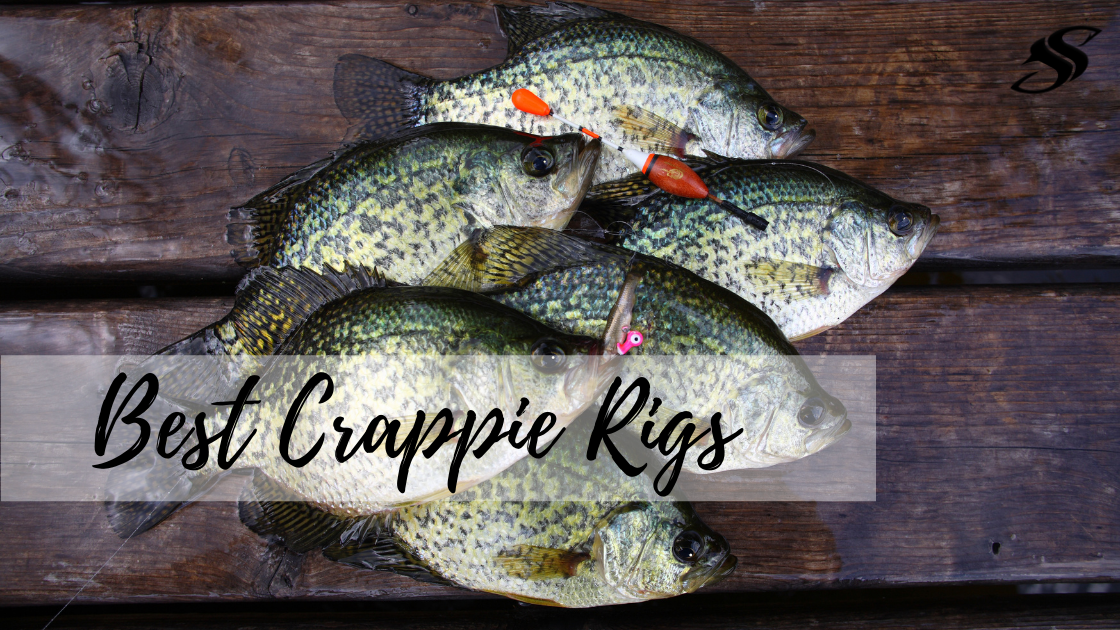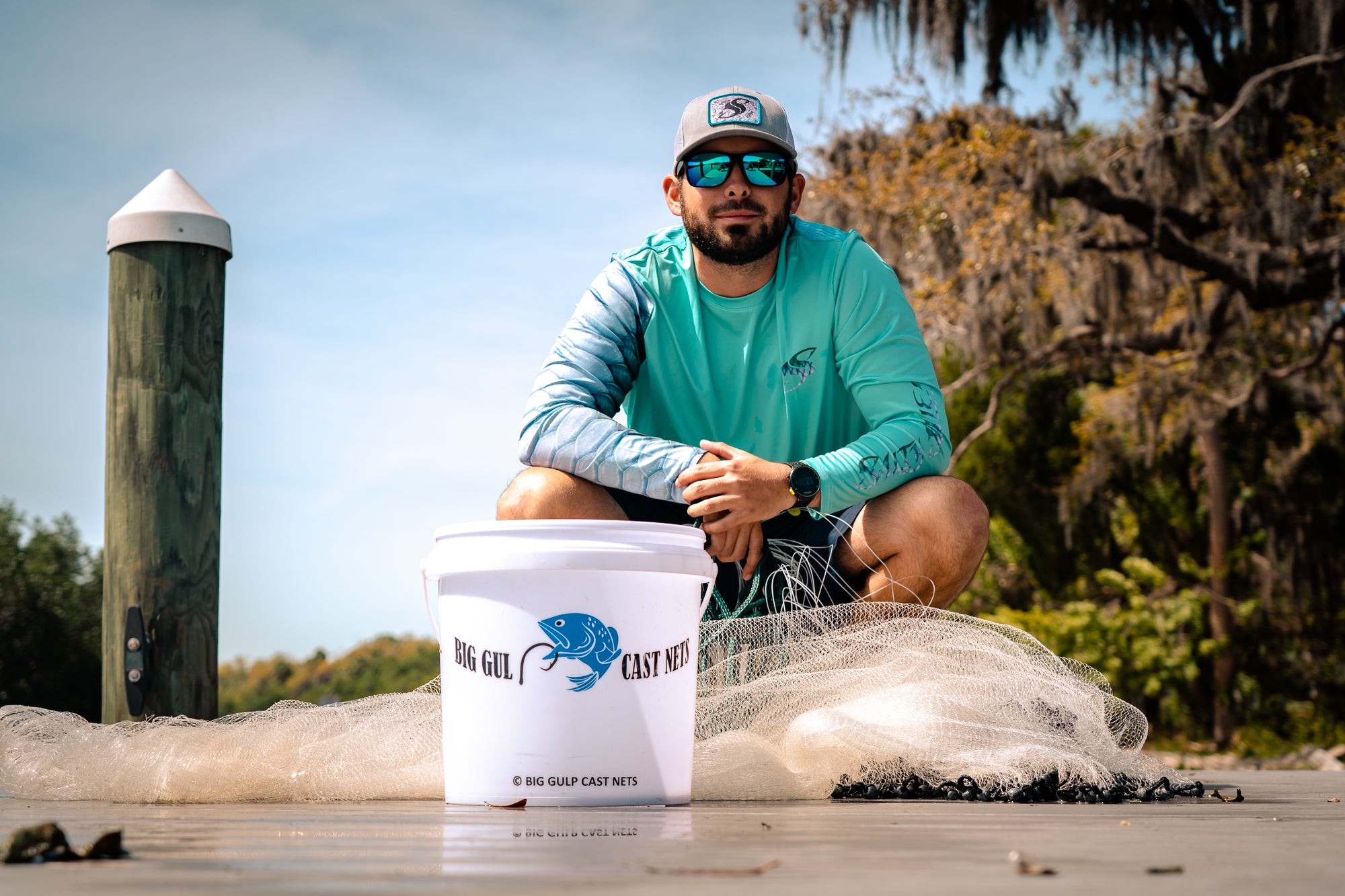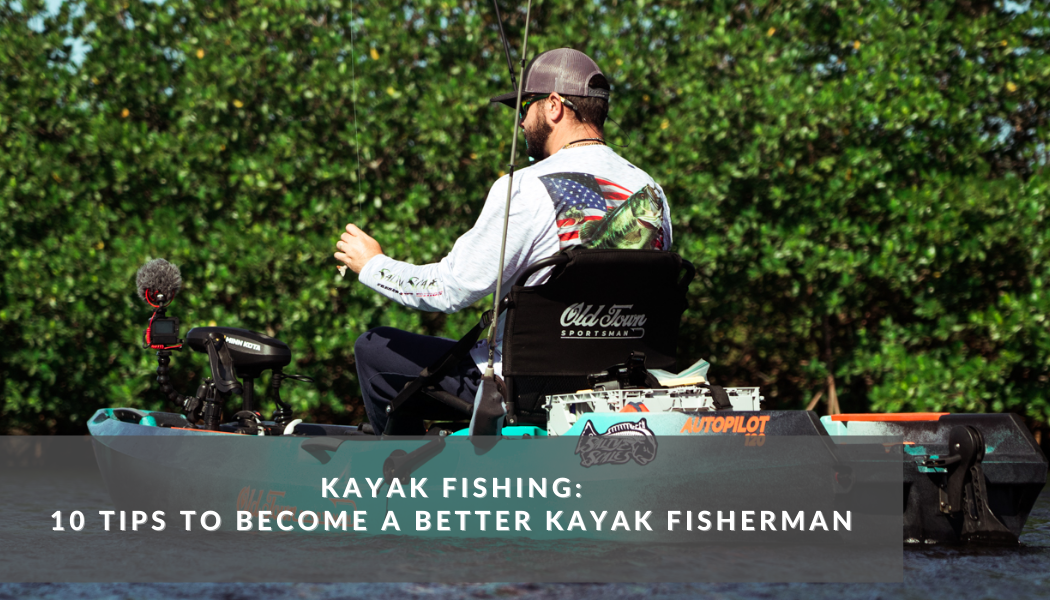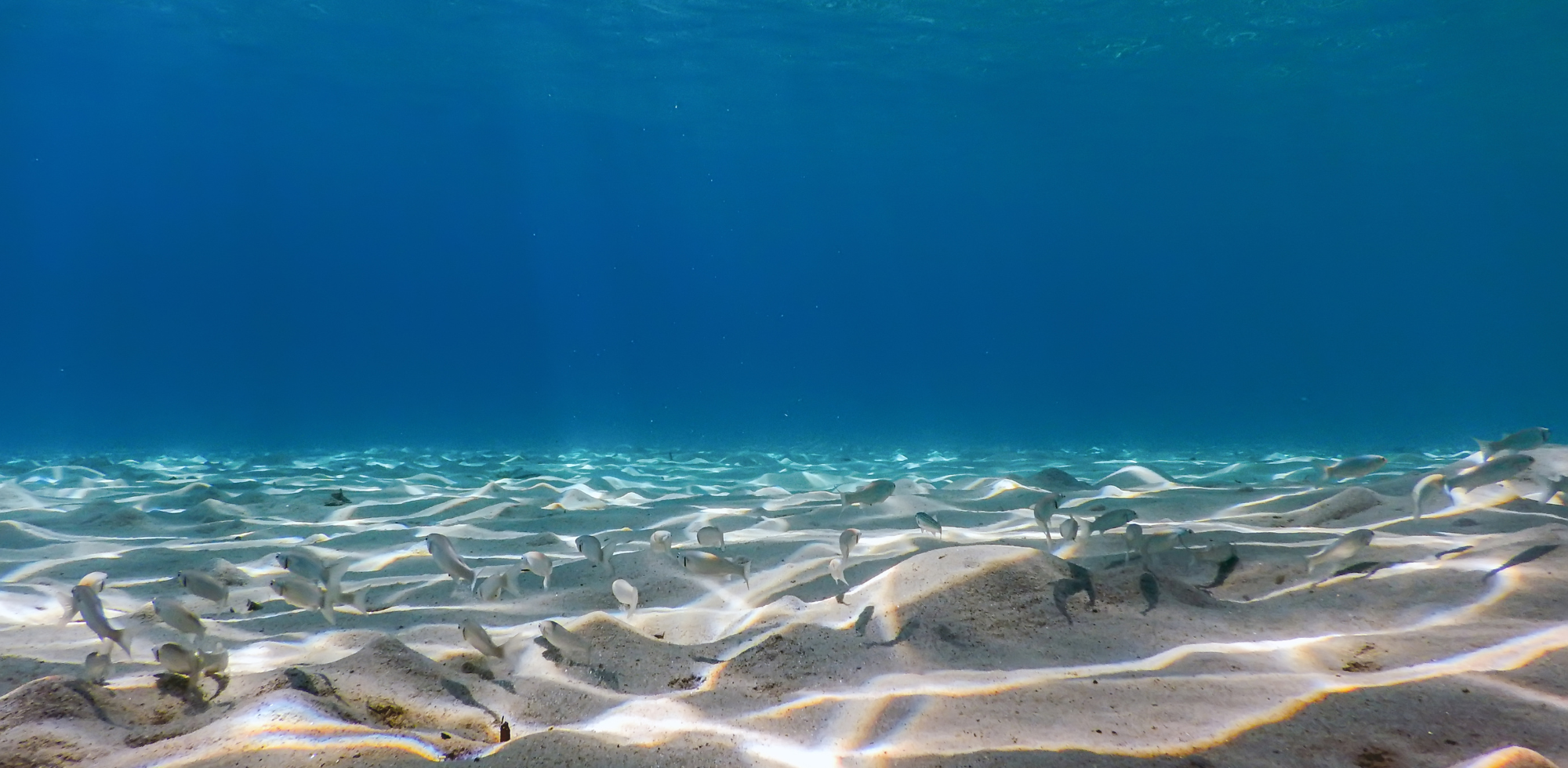
Crappie is a popular game fish among anglers. You can get crappies in many types of water bodies. It includes natural and man-made lakes, oxbow lakes, reservoirs, small ponds, moderate to large interior streams, and even river backwaters. However, in terms of preference, Crappies like standing water.
Salient Features of Crappie Fishing
You can fish crappies from the shore or boat. If you are fishing from the bank, you can target them by wading or fishing from the shoreline. You can also choose to fish from a dock or a jetty. During the spring pre-spawn time, when crappies are in shallow water, wading works the best. During the summer, crappies often utilize the shade provided by the docks or other floating structures. Since these areas offer an adequate quantity of food and shelter and the temperature is cooler, fishing under or around docks works well in the summer.
Crappies are also known as papermouths. It is because they have a soft and fleshy mouth. It requires the anglers to be mindful in setting the hook. If you apply too much force on the hookset, it may end up tearing the soft membrane near the jaw, and you could lose the fish.
Anglers who crappie fish typically use boats; there are three popular styles for boat-angling of Crappie. Drift-fishing, trolling, or still-fishing. Drift-fishing of crappies works well in the man-made lakes during the summer when crappies are suspended over the lake's thermal water temperature barrier and spread throughout the waterbody.
Drifting is useful when trying to cover a large area and fish at several depths. Since crappies prefer their baits to be moving, you can use an electric trolling motor when the wind is not enough to move the boat.
If you have found an area with a high concentration of Crappies, it is best to go for still-fishing maneuverings. You can rig your lines to fish vertically off the side of the boat. Hungry Crappies often grab the jig on the drop or within the first few cranks of the reel.
Why Rigs are a Crucial Aspect of Crappie Fishing
Many Crappie anglers don't believe in fishing with double-lure rigs. They think that rigs incorporating two lures may appear complicated to tie and fish. It is true that double-lure rigs often end up tangling and hanging up. But the use of double-lure combos makes Crappie fishing exciting because of the possibilities to get two crappies on one cast.
Correctly presenting baits can also appear difficult given the wide variety of habitats they live in. Expert anglers, therefore, often resort to miscellaneous rigs to cast the best bait possible to catch crappies. Since there are many rigs and differing notions on which rig-style to use, new anglers often find it challenging to zero in on one particular rig that would be the most effective for a specific situation.
Here, in this article, we help get rid of confusing theories and angling approaches. We present you with the five most effective crappie rigs that would cover most of the fishing scenarios you might encounter.
As the name suggests, it is a specialized trolling rig. It is a double-lure rig named after two famous crappie pros in the state of Arkansas. You can use this rig for year-round fishing.
Whether it is spring, summer, winter, or fall, you can use this rig only by adjusting the size of the sinker and the size and length of the lines. It works as well as during a calm day of fishing in the shallow water as it does on a windy day when you are trolling over deep-water cover and structure.
You need three types of swivels, one-piece each, to prepare the rig. These three varieties are a three-way swivel, a barrel swivel, and an egg sinker. Then, you need two 1/0 crappie hooks, a couple of Umbrella Crappie Tubes, a No-Knot Fas-Snap, and some 4, 6, or 8-pound test monofilament line. When you are fishing in clear water, you can leverage the lighter varieties of the line. If you are fishing in heavier muddy water, you can use heavier diameters. Also, instead of using Umbrella Crappie Tubes, you can use similar soft plastics. It's okay to switch things up, and don't hesitate to try different lures.
Now, to prepare the rig, tie the 18-inch mono leader to the three-way swivel's bottom eye. Next, run the leader through the egg sinker. Tie the tag-end to the barrel swivel. Tie one of the crappie hooks to the other eye of the barrel swivel and then tie a 15-inch leader to that eye of the barrel swivel. Tie the remaining crappie hook to a 12-inch leader and connect this leader to the side-eye of the three-way swivel. Now, rig the crappie tubes on each hook to ensure that the hook eye is inside the tube. Try using different colors of tubes until a pattern is formed.
The Fas-Snap, which remains tied to the mainline, helps quick change-out of rigs made with different hardware sizes for diverse fishing conditions. You are almost done by now, except that one eye of the three-way swivel remains vacant. Snap it to the Fas-snap, and you are all set to fish.
You can fish these rigs on 12, 14, or 16-foot trolling rods, using up to eight poles at once when you are allowed. Place these poles on T-Bars. When your location is full of crappies, it is not usual at all to catch two crappies on the line at one go.
Slip-Float Rig
This widely popular float rig is known for its diverse applications. When it comes to crappie angling, it becomes highly effective in catching fish in the moving current from the docks and in the pilings and brushy banks.
Slider floats are perfect for moderate depth and rivers with a slow current or still waters. It's one of the most effective rigs for vertical jigging. As far as visibility is concerned, its orange and yellow top allows high-visibility from a substantially long distance.
Setting up this rig is easy. You need to thread the line through the float and then tie it on a jig that weighs ⅛ ounce. The jig should be tipped with a minnow. Next, you can either tie a stop knot or use a commercial rubber stop above the float.
One of the most enticing aspects of this rig is that it can be used for fishing at any depth. You can be as close as one foot or can choose to be distant by 30 feet. To adjust for depth, you need to slide the stop knot up or down the line.
Unlike many other bobber rigs, the slip float is easy to cast. Since it remains compact with the float and the lure close together, you can throw it accurately. Once the rig lands, the bait drops away from the float and goes to the crappies that typically hide under whatever structure they find, such as deep docks or overhanging limbs.
Double Yummy
If you are targeting the jumbo crappies, go with a double yummy. The jumbo crappies tend to ignore the small jigs. To tackle these crappies, Double Yummy rigs with a pair of lures, much larger than those other fishermen use, prove useful.
It is suggested that you use 2-inch long Yum Wooly Beaver Tails as lures. Use them on the standard ⅛ ounce Crappie Pro Jighead. Pinch the head of the soft plastic lures each time you use one on the rig hook. Next, you tie the two lures on one line. Keep them at a distance of 18 inches from one another. Of the two lures, connect the top one with a short and open knot. Tie the other fishing lure at the line's end.
While applying the rig, position it so that it remains at a near-around depth where your sonar shows your fish are laying. Keep your boat in a slow trolling mode. The speed of the vessel should be such that the fishing line remains perpendicular to the water surface. Keep on slightly lifting and dropping the rig as you move ahead. Maintain a feel of the bottom so that you can identify the weight bumps.
Minnow-and-Brush-Jig Rig
It is one of the most effective rigs when it comes to using live bait in thick cover. These sorts of rigs are used the most include flooded timber, brush piles, tall jungles of vegetation, and an open pocket of weeds. Weedless jigs prove useful in bringing out slabs hidden in such areas. Moreover, if you add a live minnow to a weedless jig, you have got the best chance possible to bring up a true slab.
Some crappy anglers believe that tip-dressed jigs made of marabou or synthetic material variety go the best with a minnow. Bright color makes it effective in muddy waters. Often the body dressing makes it tough to thread the baits onto a weedless hook shank. Although, a lively minnow is not that difficult to barb through its lips or nostrils. But, when it comes to fishing cover, there are chances that the baits will pull off quickly.
If you are working with weedless jigs in weeds and brush, you can choose to use natural baits onto a bare jig hook shank.
The ideal hooking strategy would be to either hook a minnow behind the head or thread it onto the jig hook as if you are putting on a plastic grub tail. You can also insert the jig hook point in the minnow's mouth. Next, you need to carefully move it onto the hook shank so that the jig hook point comes out of the bait. If you use it this way, the jig will sustain longer.
Crankbait/ Spoon Combo
These rigs work perfectly for crappies that are in an inactive or suspended mode. It is a small-shad imitation of the crankbait in combination with a spoon. Setting up this rig is not complicated.
All you need to do is first tie a three-way swivel to your line. First, add a crankbait on a 12-inch leader to one eye of the swivel. Add a Luhr Jensen Cast Champ Spoon or similar spoon on an 18-inch leader to the other eye. The working principle dictates that when the crankbait dives, the spoon will follow. Overall, it will be a pairing that hardly any Crappie can resist.
It is not uncommon for anglers to catch one fish on the crankbait and the other on the spoon.

Tips and Tricks
Now that you have a clear idea of the most effective rigs and how to use them, you must expect that you are all set to catch the best crappies possible. There is no doubt that rigs play a crucial role in catching crappies. But it would help if you remembered that the efficacy of a rig depends on other factors. We will discuss these aspects so that you get to employ the optimal combinations next time you are out fishing.
Remember that the manufacturing of modern man-made material for rods has made identifying soft strikes easier. To leverage this feature, we would recommend that you deploy ultra-light spinning or casting rods. In combination with the lightweight reels, these rods work the best. When it comes to choosing a line, go for a light monofilament line. Better not to exceed the weight of 6 pounds unless the specific setup demands otherwise.
Although we have discussed minnows in context to a specific type of rig, many crappie anglers believe that minnows are the best live bait for crappies. Therefore, It is crucial to be selective of the size of the crappies you choose. Most of the bait shops allocate their smallest-sized minnows for crappies. It is best to go for minnows that are between one and one-and-a-half inches long. While hooking the minnow, be careful not to pierce its spine. If you hook the minnow correctly, it helps it swim freely and sustain for a more extended period.
When it comes to jigs, a lead-head jig that imitates a small minnow is the most useful and productive artificial lure that one could have. The lead-heads are made from a wide range of materials. Resultantly, they come in various colors and sizes. One of the most popular varieties is the feathered or plastic-bodied lead-heads. They come in 1-1½ inch paddle or curly tail plastics. You can work in various colors, but experienced crappie anglers go with white, yellow, and chartreuse. These colors prove incredibly productive when the water is muddy or stained. In comparatively clear water, you can go with dark colors like blue or black.
People often prefer using wet or dry flies as an alternative to jigs. Though the availability is seasonal, you can use these to fish with a fly rod near the structure. However, fly fishing is only recommended when none of the jig fishing methods work or when the bite is light.
As we have already discussed in the opening segment, crappies prefer to stay under the type of structure where they get adequate shade, food, and low temperatures. Many fishing lakes have purpose-built fishing jetties. Frequently, you will find stake beds within casting distance of these jetties. The crappies remain suspended near these structures. It is best to attach the bait to a bobber at a height that allows it to clear the stakes' top. It also reduces the amount of tackle that one loses and entices strikes from crappies that rise to the bait.
The efficacy of fishing setups also depends on knowing well when to get your fish where. The crappies living in the natural and artificial lakes are the most vulnerable when it is spring or autumn. It is challenging for the rest of the year to get consistent catches despite having the best fishing equipment at your disposal. However, if you compare artificial and natural lakes, Crappies are more abundant and vulnerable throughout the year in artificial lakes.
The ideal water temperature for spawning to start is between 55 and 64 degrees. You get this temperature during May.
It is important to remember that crappies move into the narrower and shallower areas when the water temperature rises rapidly. It generally happens during the early spring. If the water temperature and the daylight's length converge to an appropriate balance, the male crappies start moving into the shallows. They go near the spawning sites and build bowl-shaped nests there. These nests are usually built over the gravel. However, the crappies also often make them over sand or muck substrates.
Also, try locating emerging vegetation because spawning often takes place near the base of aquatic plants. Although it is not unusual to catch male and female varieties in the same volume, you will probably get the males only. It is important to remember that the male crappies become immensely aggressive during the spawning time. They often strike a lure in an attempt to defend the nests they have built.
If you are fishing in a natural lake, look near the inlets, adjoining marshes, canals, and marinas. These are the places to get spring crappies. If you are looking for spawning crappies, search in small lakes, coves, or places near the rock armor on dams. Spring crappies also gather in large numbers near the submerged structures of flood control reservoirs. Water in these areas, owing to the structural specificities, gets warm sooner than the deep main-stem water.
You can also get spring crappies near the tailwaters that are below the dams of these impoundments.
If you are fishing for crappies in the summer, remember that they move in hordes leaving the shallow waters away towards the more profound and cooler water. Since they can move to a depth up to 25 feet, it can sometimes be difficult locating them without an electronic fish-finder. You must keep doing trial and error for some time to ascertain the right depth where you get the highest concentration of crappies.
Many lakes are stratified. The crappies in such lakes are available just above the thermocline level. Below the thermocline level, there is not enough oxygen to support fish life. If you are fishing in summer since the crappies have moved to cooler water that is more still, opt for draft fishing to get the best out of your equipment. Once you have found the perfect location, you can catch them by anchoring or simply deploying still-fishing techniques. You can continue to drift-fish as well.
Since, during the summer, crappies go under structures, the probability of getting crappies is higher where there is a natural habitat like standing timber. However, these days, lakes that do not have a natural habitat also bring in artificial fish attractors that include stake beds, brush piles or rock reefs. Crappies are most attracted to the stake beds.
Summary
All these tips and tricks now give us a full picture of where to get crappies when. It also offers us insights into what types of equipment suit the best. We also get to know about the fishing styles that give optimal results for specific kinds of water during particular times of a season.
Whenever you select a rig among the five most effective ones that we have listed, try to see their efficacy in context to their being used. Don't see them in isolation, and you will get the best possible output each time you go crappie fishing.





1 comment
Bitch Hill
I am 70. Retired at 65. Used to fish with my uncle and father in Arkansas. Getting back into fishing now. Thanks for the detailed and informative article.
I am 70. Retired at 65. Used to fish with my uncle and father in Arkansas. Getting back into fishing now. Thanks for the detailed and informative article.